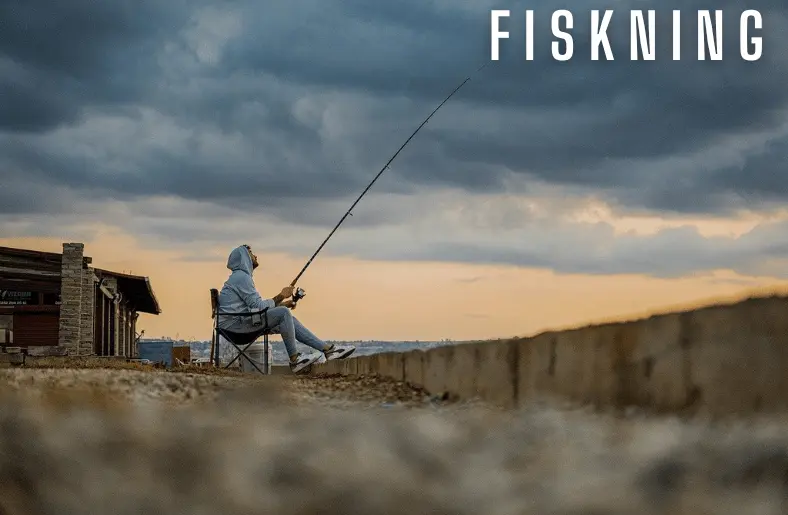Fiskning, a Swedish term for fishing, represents more than just catching fish; it’s a practice rich in tradition and environmental respect. This method combines ancient techniques with modern sustainability needs, connecting us to our heritage while addressing current ecological concerns. By shifting from harmful modern fishing methods to fiskning, we preserve cultural practices and boost marine conservation. Fiskning reduces environmental impact and fosters a deeper appreciation for natural resources. It shows how integrating traditional methods into modern efforts can benefit both cultural heritage and marine ecosystems. Therefore, fiskning stands as a model for balancing tradition and environmental stewardship. It ensures that future generations enjoy abundant and healthy aquatic life.
Understanding Fiskning
Fiskning, derived from Swedish, embodies a fishing tradition that goes beyond mere sustenance. It emphasizes sustainability and respect for marine life. This method uses ancient techniques, often passed through generations. By focusing on selective fishing, fiskning reduces bycatch and avoids harming non-target species. Unlike modern practices that can be destructive, fiskning minimizes environmental damage. Techniques such as handlines and artisanal nets are common. These methods promote the health of marine ecosystems.
Furthermore, fiskning integrates cultural values, preserving local traditions while protecting fish populations. It represents a balanced approach, blending historical knowledge with modern ecological needs. Thus, fiskning stands as a symbol of harmony between human activities and nature. It demonstrates how traditional practices can effectively contribute to environmental conservation.
The Environmental Impact of Modern Fishing
Modern fishing practices have significant environmental impacts, affecting oceans and waterways. Firstly, overfishing depletes fish populations, disrupting marine ecosystems. This depletion impacts the balance of ocean life, leading to long-term damage. Additionally, methods like bottom trawling destroy ocean habitats, such as coral reefs. These techniques drag heavy nets across the sea floor, harming vital marine environments.
Moreover, bycatch, where non-target species are caught accidentally, further threatens marine biodiversity. Pollution from fishing vessels, including plastic waste and discarded nets, also contributes to environmental harm. This waste entangles marine animals and pollutes the water. Thus, modern fishing practices, while efficient, often prioritize profit over ecological health. Consequently, finding sustainable alternatives is crucial for preserving marine life and ensuring future ocean health.
Fiskning as a Sustainable Alternative
It offers a sustainable alternative to modern fishing practices, emphasizing traditional methods. Firstly, it uses selective techniques, targeting specific species and reducing bycatch. This approach helps protect non-target fish and marine life. Additionally, fiskning minimizes environmental impact, avoiding harmful practices like bottom trawling. Instead, it employs methods like handlines and artisanal nets, preserving marine habitats.
Moreover, fiskning supports local communities by sustaining traditional livelihoods and strengthening cultural ties. This practice often maintains a deep respect for nature, ensuring fish populations remain healthy for future generations. Furthermore, fiskning encourages responsible seafood consumption, aligning with sustainable practices. By integrating tradition with environmental stewardship, it represents a balanced approach to fishing. Therefore, adopting these methods benefits both the environment and local cultures, promoting a healthier marine ecosystem.
Global Examples of Fiskning Practices
Globally, fiskning practices showcase diverse methods that honor tradition and sustainability. In Scandinavia, coastal villages use handlines and fyke nets, maintaining ancient techniques. Similarly, Indigenous communities in Alaska, such as the Yup’ik, rely on sustainable methods like ice fishing. These practices respect natural cycles and preserve fish populations. In Southeast Asia, artisanal fishers in Indonesia and the Philippines employ small-scale netting, harmonizing with the sea’s rhythms.
This approach supports local economies and protects marine environments. Furthermore, Mediterranean communities in Greece and Italy utilize methods like purse seining and longlining. These techniques emphasize sustainability, preserving the rich marine biodiversity of the Mediterranean. Overall, these global examples of fiskning reflect a commitment to environmental stewardship and cultural heritage. They demonstrate how traditional practices can contribute to sustainable fishing worldwide.
How Fiskning Supports Local Communities
It supports local communities by preserving traditional fishing methods. These practices offer economic benefits through sustainable seafood production. Additionally, fiskning creates jobs and sustains local fisheries, contributing to community livelihoods. Importantly, it fosters a strong connection between fishers and their environment. As a result, communities gain a sense of identity and pride. Furthermore, fiskning promotes cultural heritage by maintaining age-old fishing techniques.
It also encourages local businesses, boosting economies through artisanal markets. Moreover, traditional methods used in fiskning help ensure the health of local fish populations. This, in turn, supports long-term food security for communities. By embracing fiskning, local communities can balance economic needs with environmental conservation. Ultimately, fiskning strengthens community ties and supports a sustainable future.
Practical Ways to Support Fiskning
Supporting fiskning involves several practical actions. First, choose seafood that comes from sustainable sources. This helps promote responsible fishing practices. Next, reduce plastic waste by using reusable bags and containers. Plastic pollution harms marine ecosystems and fish habitats. Additionally, support local fishers who practice traditional, sustainable methods. By buying their products, you encourage eco-friendly fishing.
Furthermore, participate in or donate to conservation organizations focused on marine health. These groups work to protect ocean environments. Also, educate yourself and others about the benefits of fiskning. Knowledge spreads awareness and fosters better fishing practices. Finally, advocate for policies that enforce sustainable fishing regulations. Effective policies can significantly impact environmental preservation. By following these steps, you contribute to the health of our oceans and the success of fiskning.
The Future of Fiskning
The future of fiskning holds promising developments. Initially, technology will play a major role. Advanced tools can enhance sustainable practices. For instance, innovations in fish tracking will improve monitoring. Consequently, better data leads to informed decisions. Additionally, community involvement will grow stronger. As more people value traditional methods, awareness will increase. Moreover, policies will evolve to support sustainable practices. Governments will likely enforce stricter regulations. Therefore, fishing will become more eco-friendly over time. Furthermore, international collaboration will become crucial. Nations will cooperate to exchange optimal methodologies.
Also Read: Symley Supplement: Improve Digestion and Immunity
Conclusion
In conclusion, It plays a vital role in preserving traditions and marine life. By understanding its significance, we can appreciate its impact. Moreover, embracing sustainable practices ensures that fishing remains viable for future generations. As we see, modern fishing methods often pose environmental challenges. However, it offers a promising alternative with its focus on conservation. Consequently, supporting local communities through fiskning strengthens cultural ties and economic stability. Moving forward, practical steps to support fiskning will drive positive change. Ultimately, a commitment to sustainable fishing practices benefits both ecosystems and communities. Thus, adopting these practices is essential for a harmonious balance between tradition and environmental stewardship.




